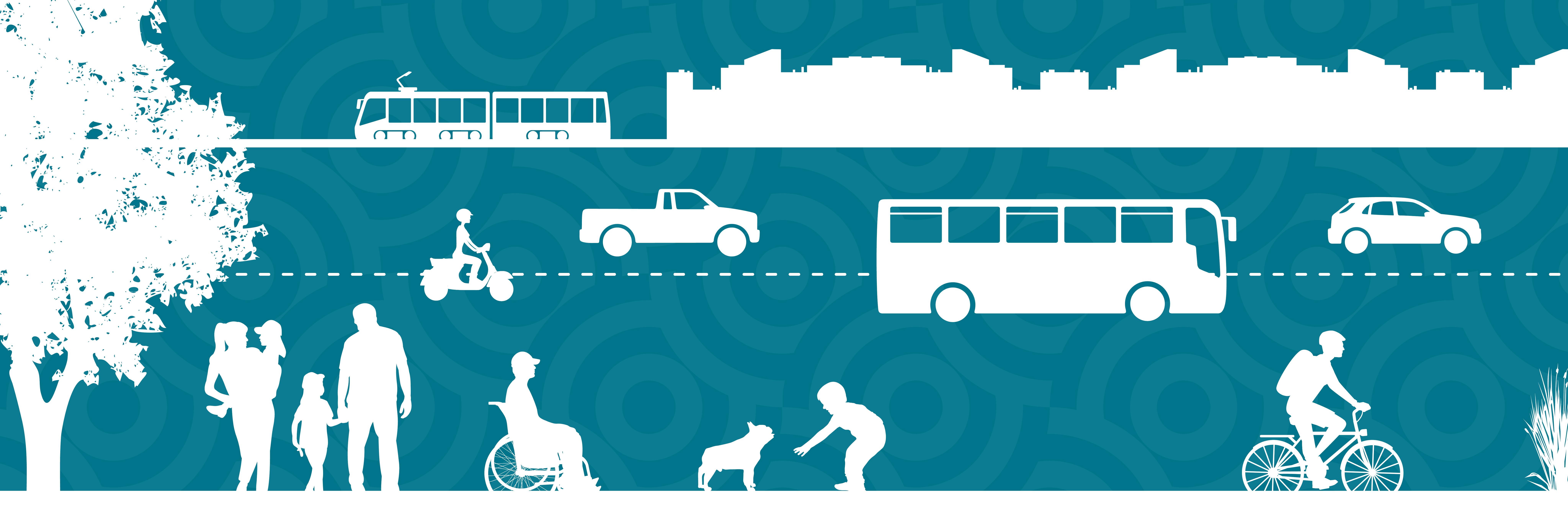Aurora street network types and connectivity challenges
Aurora Places, the city’s adopted comprehensive plan, identified 10 distinct place types in Aurora today and to be developed in the future. The place types capture the general character, various land uses, and street networks that help define each place. The street network and surrounding land use work together to help create spaces people want to live, work, and visit. Aurora’s existing layout creates some challenges to achieving multimodal connectivity and expansion of future identified places.

Urban districts


Urban districts represent Aurora’s existing and future activity centers that feature entertainment districts, civic institutions, retail and shopping, and multifamily housing. These places have high intensity uses and development that can support a highly walkable and bikeable environment.
Features:
- Continuous grid
- Short urban blocks
- Easy navigation/connection for pedestrians and cyclists
- Lacks direct, comfortable connections to surrounding neighborhoods
Innovation districts


Innovation districts are places that generate new ideas and inspire creativity. Land uses are composed of light industrial, business parks, and medical and educational institutions that are designed like campus environments. There are gathering spaces to foster connection and a connected grid for easy navigation.
Features:
- Connected grid
- Walkable network
- Campus layout
- Auto-oriented designs with large parking lots
Industrial hubs


Industrial hubs support commercial and industrial uses that are critical to Aurora’s economy. These are high-employment centers and often generate significant commercial truck traffic. These hubs are located near highways and interstates for easy access.
Features:
- Easy access to highway network
- Streets can accommodate large trucks
- Streets lack direct, comfortable pedestrian and bicycle connections
Original Aurora


Original Aurora is the city’s first neighborhood that blends historic residential neighborhoods, commercial corridors, and an arts district. The area features a traditional street grid that strengthens connections between key destinations.
Features:
- Established traditional grid
- Walkable/bikeable network
- Short east–west blocks
- Narrow sidewalks and lack of bicycling infrastructure
Established neighborhoods


Established neighborhoods are places with predominantly low-density residential uses of single-family detached and attached homes. There are pockets of other uses such as schools, parks, and religious institutions. These neighborhoods were designed in a curvilinear pattern creating barriers to walking and biking to supporting land uses.
Features:
- Curvilinear street pattern
- Cul-de-sacs
- Wide and fast arterials with backyards facing the street creating fence canyons.
- Indirect connections for pedestrians and bicyclists
Emerging neighborhoods


Emerging neighborhoods are recently built subdivisions that feature complete neighborhood elements such as diverse housing options, parks and open space, and pedestrian and bicycle infrastructure. They are designed with a more traditional grid pattern and are organized around a central gathering place.
Features:
- Traditional grid pattern
- Supports multimodal connectivity
- Easy access to commercial corridors
- Wide and fast arterials
- Still lacking comfortable bicycling connections
Commercial hubs


Commercial hubs are located on the perimeter of established and emerging neighborhoods, providing easy access to services, shopping, and entertainment. These places should include gathering spaces to encourage social interaction and serve as key connectors for transit users, pedestrians, and cyclists.
Features:
- Connectivity to major commercial corridors from residential areas
- Convenient access to businesses
- Large parking lots create a disconnect between places
- Interior roadways are largely auto-oriented, sometimes lacking sidewalks


